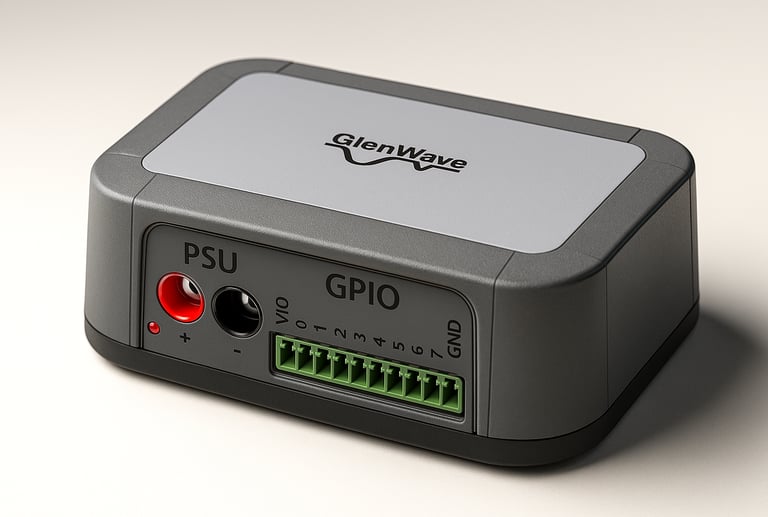Innovative Python-Controlled Instruments
Empowering Engineers, DIYers, and Educators with Versatile Tools.
About GlenWave Instruments
To empower engineers, researchers, educators, and makers with affordable, versatile, and intuitive electronic instruments that accelerate innovation.


Our Mission
Our Vision
To accelerate the pace of hardware innovation by delivering intuitive, seamless instruments that remove friction from development and let engineers focus on ideas, not infrastructure.
UPG-812
Compact, versatile instrument for engineers and makers.


The UPG-812 is a compact, affordable, and versatile bench-top instrument that combines a programmable power supply with powerful general-purpose I/O in a single, easy-to-use device. Designed for engineers, researchers, educators, and makers, it delivers granular voltage regulation alongside support for common protocols like I²C, SPI, UART, and PWM. Controlled entirely through a simple scripting interface, the UPG-812 removes complexity from hardware bring-up, prototyping, and testing, making it an indispensable tool for accelerating development and innovation.

Register Your Interest
Interested? Let us know! Sign up today to get updates and exclusive early access.
Frequently Asked Questions
What are the typical use cases of the UPG-812?
Can I control the UPG-812 with Python?
Who is the UPG-812 designed for?
The UPG-812 is built for anyone who needs a versatile, reliable, and easy-to-use electronic instrument. Engineers and researchers use it for prototyping, debugging, and hardware validation. Educators and students benefit from its affordability and intuitive interface, making it ideal for hands-on learning. Hobbyists and makers appreciate its compact size and scriptable control, which simplify experimenting and building custom projects. Whether in a lab, classroom, or home workshop, the UPG-812 delivers professional functionality in a form that’s accessible to all.
The UPG-812 is designed for a wide range of tasks in prototyping, testing, and education. Typical use cases include powering and monitoring breadboards or development boards, performing PCB bring-up activities, or characterising devices. It’s also well-suited for generating a wide variety of signals to stimulate various circuits, sensors or actuators, testing I²C/SPI peripherals, and validating sensors without writing low-level MCU code. With its ability to act as a universal bridge via its python API, the UPG-812 streamlines everything from quick experiments on the desk to early-stage product development.
The UPG-812 is controlled entirely through a Python API, making it simple to integrate into any workflow. With just a few lines of code, you can set voltages, generate signals, or communicate seamlessly over protocols like I²C, SPI and UART.
